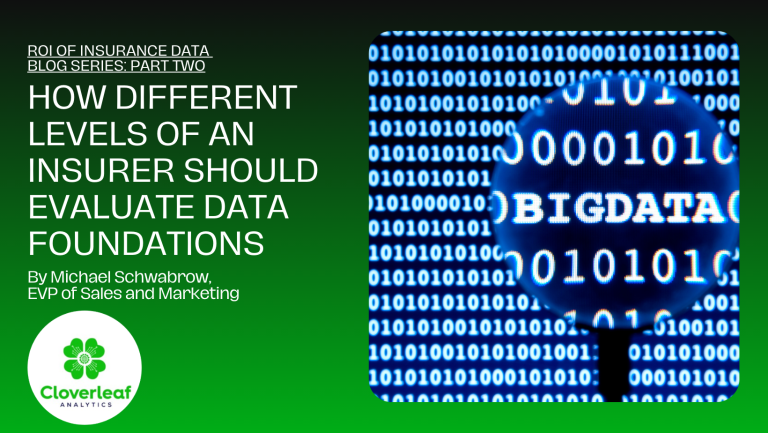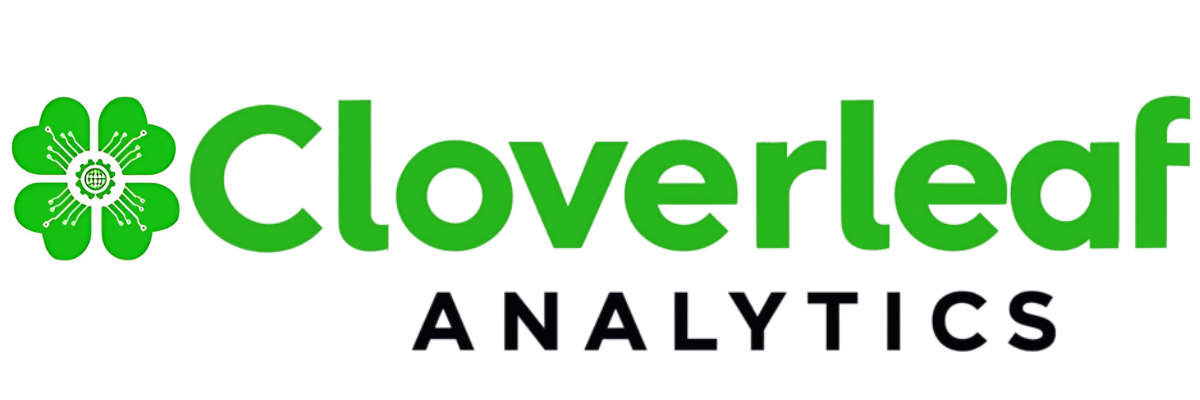How Different Levels of an Insurer Should Evaluate Data Foundations

Part two of the ROI of Insurance Data Blog Series (Read Part One Here)
By Michael Schwabrow, EVP of Sales & Marketing for Cloverleaf Analytics

Ever heard of Peter Drucker (1909 – 2005)? He was a management consultant credited by some with building the foundations of the modern corporation. His perspective on information vs. data from 36 years ago is very pertinent to the transformation the insurance industry is undergoing today. Here is what he said –
“Information is data endowed with relevance and purpose. Converting data into information thus requires knowledge. And knowledge, by definition, is specialized.”
Having come back from the Insurtech Insights event, it is more apparent that many insurers do not understand how to get to the information stage that Peter referenced, which Cloverleaf calls Insurance Intelligence. Some insurers understand that data must be converted into information, but they forget the specialized aspect of their information strategy by selecting generic cloud platforms without considering the vital specialized industry and/or technology expertise. Others do not even know how to ask the right questions to get started.
For insurers to receive a strong ROI on their insurance data (sign up for early access to our ROI of Insurance Data Calculator here), the entire business needs to take a fine-tooth comb to the foundations of their data strategy and systems. In this post, I am going to outline how the main levels of an insurer can get started on this journey.
The C-Suite
The CEO, CTO, CIO, Chief Data Officer, and Chief Risk Officer (if an insurer has these positions) should set the organizational tone for how the business utilizes its data and attains the information stage. This should include the technology it purchases, the imperativeness of how to effectively manage internal, customer, and third-party data, and how to build winning business strategies and customer experiences fueled by insurance intelligence.
Take for instance Core systems, while large brand names have rightly earned their due share as industry leaders, some vendors have this recognition based on historical achievements and not current innovations that will best serve the future insurance customer like a smaller cloud-native vendor could. The big vendors today started small with a promise that they had a vision for transitioning from 100% paper-based operations. The C-suite needs to objectively evaluate all technology purchases.
The C-suite should also challenge every level of the business to find any instance where insurance data is in siloes, exposed to potential security vulnerabilities, incorrectly categorized in analytics systems, or lying dormant with no intelligence garnered from the data.
If the entire organization understands from the top how important technology, intelligence, and customer experience are to long-term business viability, then it will trickle down throughout the organization.
Middle Management
In a perfect scenario, an insurer has written down the guiding principles from the C-suite that I have outlined above. If so, then it makes the job of middle management much easier. Even in that scenario, Directors and Managers must be on the front lines to hold their vendor partners, direct reports, and senior management accountable for adherence to the principles.
In a situation where this structure does not exist, people, process, and technology chaos usually are what is under the hood. You can have one team using data in a silo in one way serving one customer business need, and another team serving the same customers with different data and different technologies resulting in an inconsistent customer experience and lack of holistic internal awareness of customer interactions.
Another problem can be the creation of home-grown insurance technology software to plug a leak for a short term while other problems are growing due to not having a universal perspective of how to approach technology and insurance intelligence.
Usually, this home-grown solution will take more time and resources and leave root problems unsolved. Additionally, another business or IT team could be engaged with a technology vendor that specializes in addressing root problems but then that team has no idea that a home-grown solution is under development thus hampering the purchase. This does not extract ROI from insurance data, and it wastes other valuable internal resources.
The issue of building home-grown versus purchasing technology built by specialized experts is akin to UPS building its own self-driving delivery truck versus partnering with Waymo in 2021 to develop it for them. Trusting and partnering with technology experts is a model that has proven itself many times over, and it is something insurers must embrace if they want to attain operational excellence and strong growth with or without AI.
Beyond this, the C-suite guiding principles should be applied to determine what types of third-party and customer data are in the unified data architecture. Often, technology partners can help in making recommendations based on the dashboards they can show about what mission-critical data categories to include or exclude.
In Conclusion
This post is not intended to be Cloverleaf’s review of the best Core systems and other insurance technology platforms that insurers should have in place. Ideally, an insurer has hired the right people who understand insurance, the value of information/data, and where technology that can unify the business should fit. The most important foundation of insurance data programs does involve this, but we have seen more impact with insurers that have alignment between the C-Suite and Middle Management on guiding principles for how the business should approach insurance intelligence.
I challenge insurers to not only take my advice in this article but also compare their organizations against Peter Drucker’s vision for the general business world by 2008 that we shared to open this article with and see if they have even reached this level nearly 40 years since his article.
Check out our Platform section for more details on our services.
